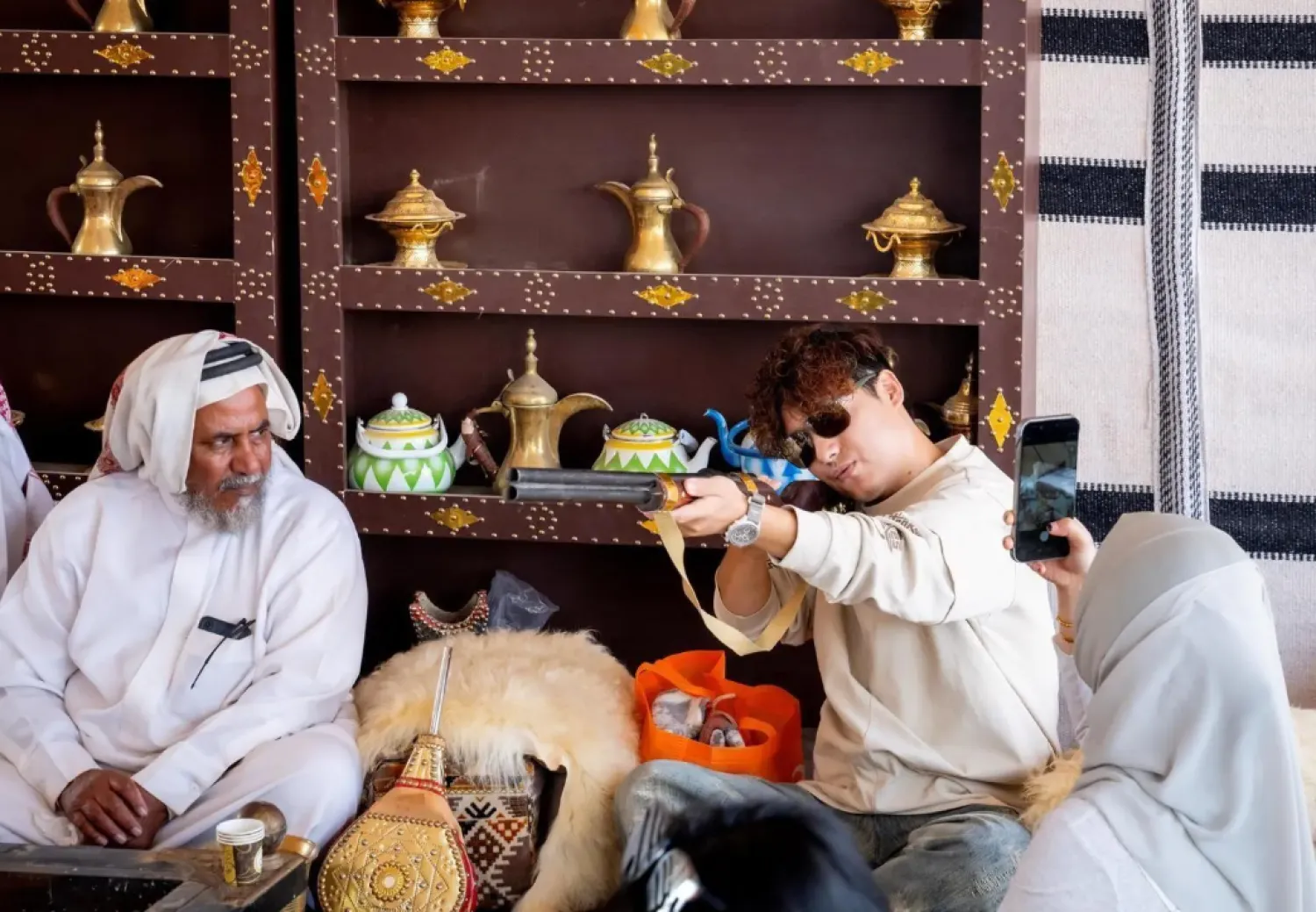The golden rays of the afternoon sun enhance the bold, hand-painted patterns on the mud walls of a round, thatched hut in Peggy Masuku's village of Matobo in southwestern Zimbabwe.
Outside, at a small table with two curved seats -- all fashioned out of mud -- Masuku shows visitors how she mixes soil pigments, charcoal and ash to create the earth tones that make the striking motifs.
The 54-year-old is admired as one of the best among hundreds of women who practice the traditional art of hut painting in the picturesque granite hills of Matobo, where the rocks hold spiritual value.
The art is gaining recognition beyond this part of rural Zimbabwe, with the bold patterns incorporated into fashion and designs that are finding a small market as far away as Europe and bringing income to its village artists.
For the self-effacing Masuku, it all started when her stepmother assigned her, as the youngest girl in the family, the duty of smearing a cow-dung paste onto the walls and floors of the family huts, a traditional technique to maintain the structures.
"My stepmother would oversee this chore and make sure I did it to perfection. Initially, I thought this was abuse but I later realized it was good training," Masuku told AFP.
"I graduated to doing the hut painting, which elderly women did, and over time became quite good at it."
- International interest -
Masuku's talent first found recognition through a competition called My Beautiful Home, in which she has featured among the winners several times since its launch in 2014.
The annual event is the brainchild of Veronique Attala, a French woman who stumbled on "a beautifully decorated hut" when lost while hiking in the Matobo Hills, a UNESCO heritage site that has one of the highest concentrations of rock paintings in Africa.
Attala, who has lived in Zimbabwe for more than 30 years, was inspired to nurture the tradition and support the women artists and their farming communities.
A new project headed by the German Embassy has also started testing out the commercial promise of these designs.
In collaboration with Zimbabwe's National Gallery and Fashion Council, it has launched the Matobo Collection featuring the work of selected artists reproduced on saleable items such as textiles, flowerpots and lampshades.
The project is helping to find markets in other parts of Zimbabwe and also abroad, mainly in Germany, with the artists receiving a license fee for their designs and royalties for every sale.
To help the women navigate issues of copyright and compensation, the embassy has also brought in intellectual property lawyers.
"The aim is to further promote the artistry of the ladies of Matobo and, subsequently, create greater awareness of this unique cultural heritage, nationally as well as internationally," the embassy's cultural attache Katrin Simon told AFP.
One of those selected for the Matobo Collection is Elgar Maphosa, who is impressed that the traditions of her community have "come this far".
"It is something that we do as routine," the 58-year-old villager said. "I never at any time imagined that I would one day get an income out of it while also learning new things."
- Younger generation -
Hut painting is an ancient Ndebele tradition in which the motifs were originally imbued with meaning.
It was a "mode of communicating the worldview or beliefs, as well as ideals and values of communities that lived long ago," said cultural historian Pathisa Nyathi.
"Over time the meanings got lost and, owing to the interaction with other cultures including Western, emphasis is now on aesthetics," Nyathi told AFP.
Emboldened by her success at My Beautiful Home, Masuku has been commissioned to paint buildings at Zimbabwe's top tourist resort town of Victoria Falls, which she hopes will lead to more projects.
Younger women are also learning the craft, including 26-year-old Nozipho, a development studies graduate and civil servant who is currently learning the art from her mother, and hopes to follow the steps of the older women in her community.









